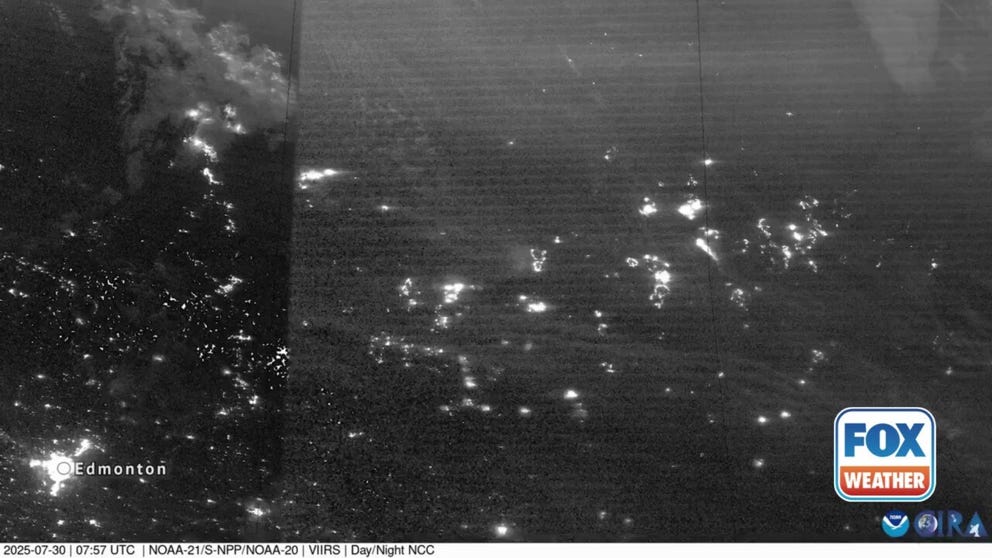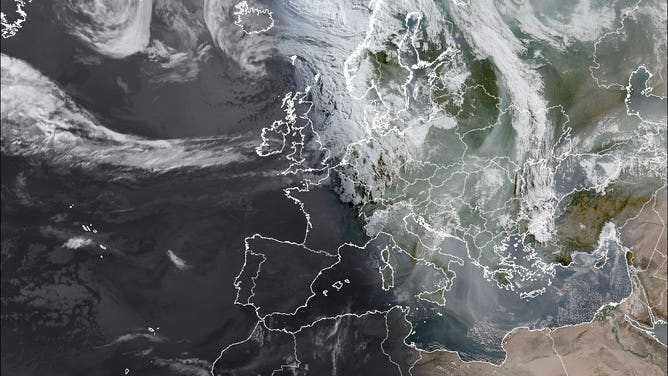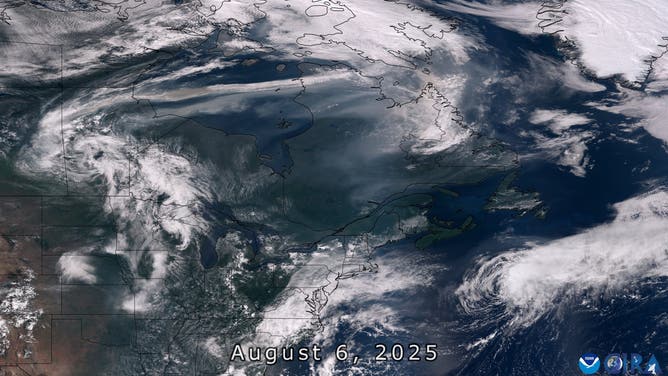Smoke from Canada's wildfires reaches parts of Texas as it nearly circles the globe
Canadian Interagency Forest Fire Centre reports nearly 4,200 wildfires in 2025 have consumed more than 17 million acres. During the historic firestorm of 2023, more than 45 million acres burned across the country.
Wildfires rage on in Saskatchewan, Canada
Video from July 30 shows the wildfires in Canada burning through the night in Saskatchewan before daylight when smoke can be seen in the atmosphere.
Smoke produced by hundreds of wildfires burning across Canada has drifted thousands of miles and nearly circled the entire globe, with hazy skies now seen across parts of North America, Europe and even parts of Russia.
According to the Canadian Interagency Forest Fire Centre, more than 17 million acres have burned so far this year as a result of nearly 4,200 wildfires.
While the burned acreage significantly exceeds Canada’s 25-year average, it remains well below the record-setting fire season of 2023, when more than 45 million acres were destroyed.
Satellite imagery has helped to track vast plumes of smoke stretching across the Atlantic Ocean, reaching into parts of Europe and Russia.
While the smoke has not yet caused significant degradation of air quality levels outside of North America, air quality could become a concern where the particles are able to reach near the surface.
SHIPWRECKS DATING BACK TO 1700S UNCOVERED ALONG NORTH CAROLINA SHORELINE
In recent weeks, the smoke has been dense enough at times to trigger air quality alerts across more than a dozen U.S. states.
The Midwest and Northeast have experienced some of the worst conditions in the U.S., with warnings and health alerts issued from Minnesota to Maine.
At one point, visibility concerns related to the haze even led to flight delays at Boston’s Logan International Airport.
In southern states such as Texas and Louisiana, residents have reported hazy skies and colorful sunsets.
National Weather Service meteorologists said that while the idea of smoke fully circumnavigating the Earth is infrequent, it is not entirely outside the realm of possibility.
"It’s difficult, but not impossible," a NWS forecaster told FOX Weather.
Typically, long-traveling smoke gets blocked or diverted by the jet streams over Asia, where it disperses before making a full loop around the globe.
However, the FOX Weather Center noted that if the Pacific cyclone season were to become active, the potential exists for wildfire smoke to become entrained in a tropical system and carry it further eastbound while following the jet stream patterns.
Seeing wildfire smoke intertwined with a tropical cyclone is not unusual. In fact, recent satellite imagery captured smoke mixing amid the clouds and thunderstorms associated with Tropical Storm Dexter in the central Atlantic Ocean.
PHOTO GALLERY: THE WORST 25 HURRICANES OVER THE LAST 25 YEARS
The most direct directional heading for smoke from the Canadian wildfires to impact Alaska would be from an east-to-west flow instead of traveling some 20,000 miles around the globe.
As the Northern Hemisphere heads toward winter, flows out of the northwest-to-southeast or west-to-east typically dominate weather patterns, making it more difficult for smoke to head in a westbound trajectory.
What remains unknown is how long the wildfire season will last, which dictates air quality readings across a large portion of the globe.
Some U.S. lawmakers have urged Canada to take stronger action to prevent forest fires, but as climate change extends wildfire seasons, those living in fire-prone areas have noted a substantial increase in the number of blazes.

Map of active wildfires from the Canadian Interagency Forest Fire Centre.
(Canadian Interagency Forest Fire Centre / FOX Weather)


